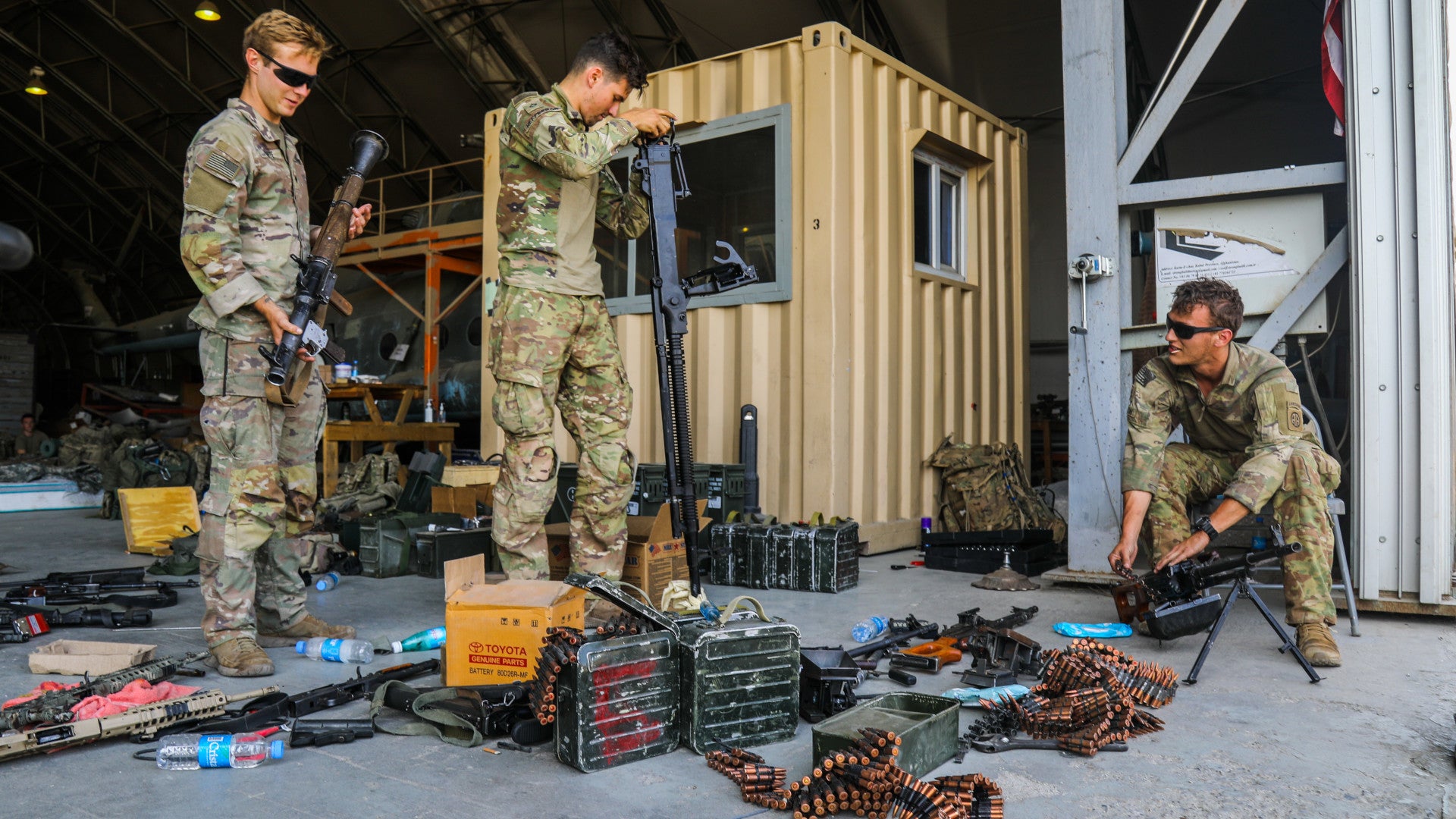U.S. Army Major General Hank Taylor has corrected the record regarding the horrific terrorist attack near Hamid Karzai International Airport in Kabul yesterday, saying that the U.S. military now only believes that there was one suicide bomber, rather than two. The reports of a second bombing at the nearby Baron Hotel were incorrect. He did also confirm that American troops at the airport had conducted “controlled detonations” to deliberately destroy equipment yesterday. This could account for at least reports from individuals in Afghanistan’s capital that they had heard a number of additional blasts later in the day.
Major General Hank Taylor provided these and other details at a press conference this morning alongside Pentagon Press Secretary John Kirby. Taylor also said that the total number of American service members who had died yesterday remained at 13. There have been separate reports that at least 18 other U.S. personnel were wounded.
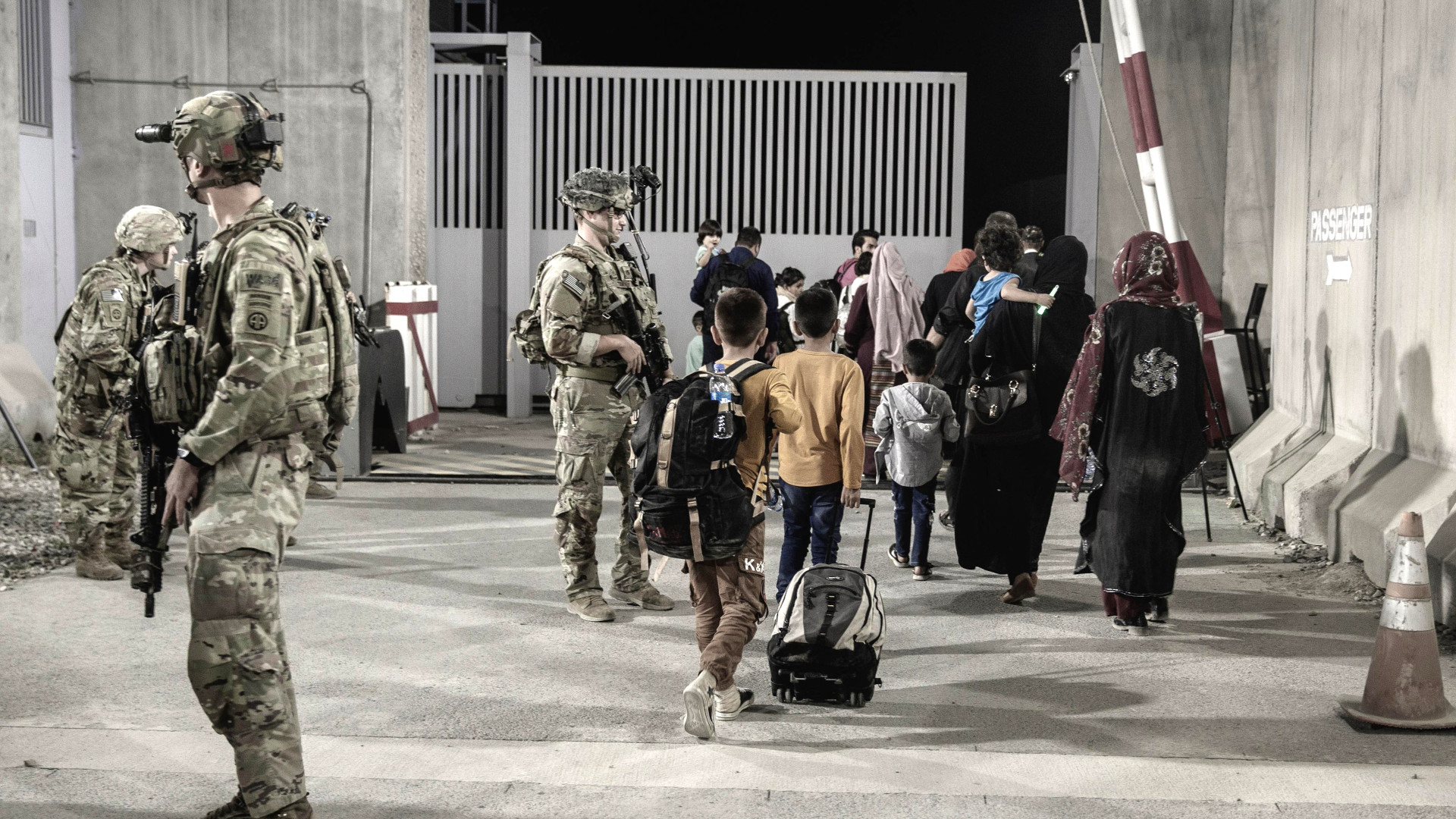
The death toll among Afghans continues to rise, with reports indicating that at least 169 other people were killed, and that many more were injured, in the attack, which included the suicide bombing and subsequent gunfire near Hamid Karzai International Airport’s Abbey Gate. ISIS’ branch in Afghanistan, also referred to as ISIS-Khorasan Province (ISIS-K), which views the Taliban, as well as the United States and others, as enemies, has claimed responsibility.
“The actual specifics of what type of equipment was destroyed, I don’t have that,” Taylor said in response to a question about the subsequently controlled detonations at the airport in Kabul. “The commander has the authority there to destroy equipment.”
“You can expect that there will be other equipment and material things that will not be brought back with us. We’re going to do this in a judicious way,” Press Secretary Kirby added. “So, you’re going to continue to see things disposed of in a responsible way as we get closer to the end of the mission and I think people would expect us to do that.”
At present, the U.S. government’s plan remains to conclude the ongoing evacuation operations at Hamid Karzai International Airport and have American troops completely withdraw from Afghanistan by Aug. 31. Kirby confirmed that American authorities are looking at continue to help people get out of the country after that date, but said that whatever this assistance consisted of would not necessarily have a military dimension to it.
While neither Taylor nor Kirby could provide any specifics about what was blown up at the airport yesterday, or what American troops may otherwise be preparing now to dispose of in any way, this could include destroying weapons and equipment that had belonged to the now-defunct Afghan National Defense and Security Forces (ANDSF). Much of this materiel had been supplied by the United States, to begin with.
In fact, U.S. Central Command (CENTCOM) released a picture earlier this week, seen at the top of this story, showing members of the U.S. Army’s 82nd Airborne Division “de-militarizing” Afghan weapons at the airport in Kabul. The picture shows the soldiers working on various 7.62mm AK-series rifles and PK-type light machine guns, along with an RPG-7 rocket-propelled grenade launcher and a 12.7mm DShK heavy machine gun. There appears to be at least one 5.56mm M4/M16-type gun among the assortment of weapons being broken down, as well.
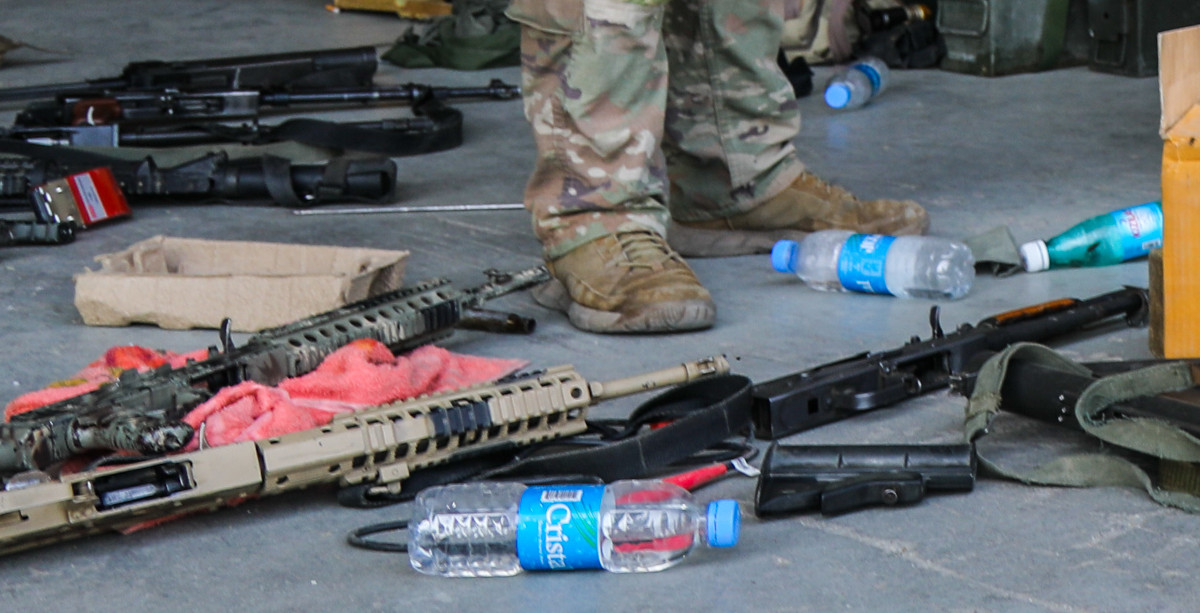
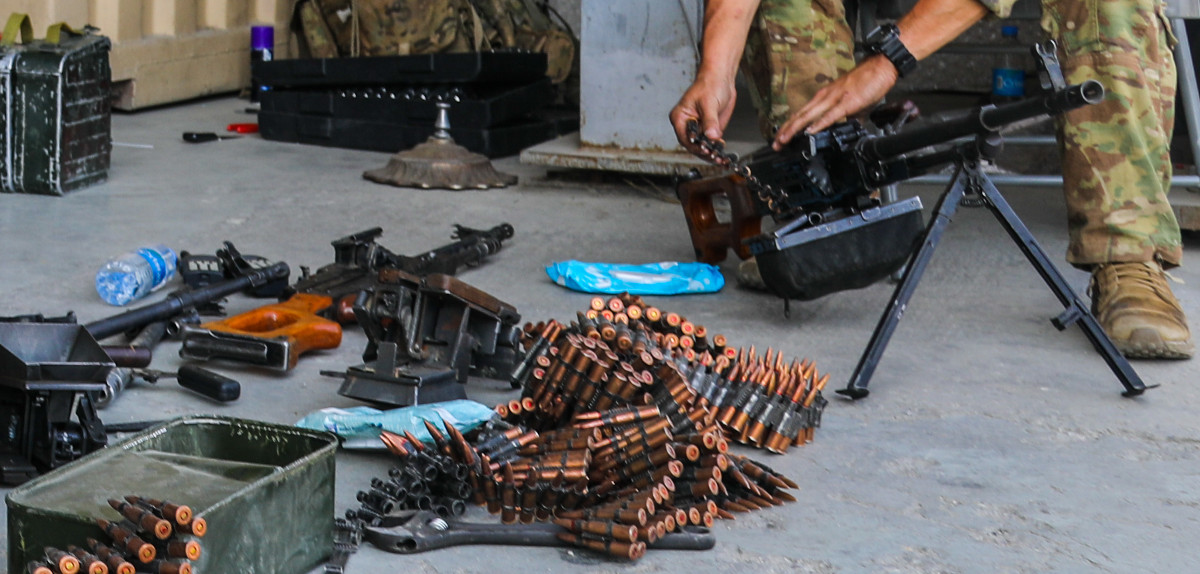

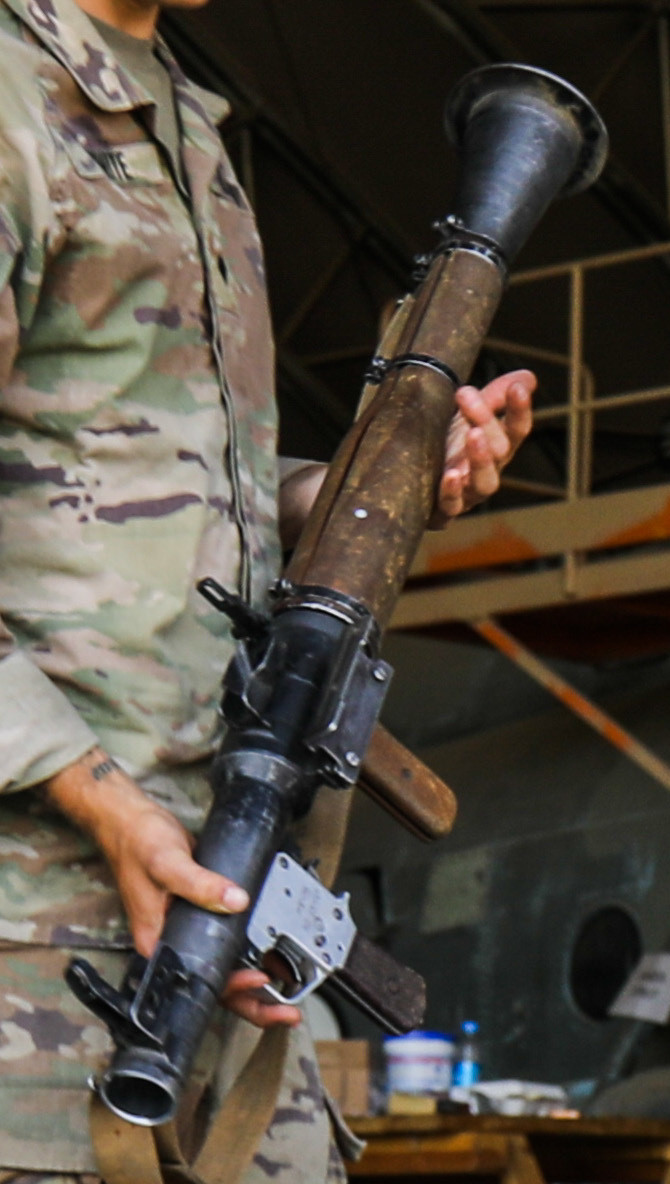
While parts could be removed from any of these weapons to make it impossible for someone to simply pick them up and begin using them, they are all types in widespread service around the world. In addition, during the lightning-quick conclusion of their conquest of Afghanistan earlier this month, the Taliban captured hoards of small arms and light weapons, among troves of other things, including American-supplied M4 carbines and M16 rifles, as well as AKs, PKs, DShKs, RPG-7s, and other Soviet-designs.
All told, it would be hard to ensure that the Taliban, or other militant or terrorist groups in Afghanistan, would not be able to put these weapons to use without completely destroying them. The same would go for any leftover ammunition.
This brings up questions again about whether the U.S. military might be prepared to destroy other larger, higher-end equipment at Hamid Karzai International Airport that had belonged to ANDSF units, especially former Afghan Air Force aircraft that are still there. There have also been reports that the U.S. government has at least considered the possibility of employing airstrikes to destroy captured equipment after the evacuation operations end next week.

American equipment will, of course, also be among what gets destroyed between now and next Tuesday. This could potentially also including larger, more costly items, such as aircraft and light armored vehicles. The War Zone
was first to report last week that the U.S. State Department has already abandoned seven CH-46E Sea Knight helicopters at Hamid Karzai International Airport after taking unspecified steps to render them inoperable. The New York Times
has also reported that a significant amount of other materiel, including a Centurion counter-rockets, artillery, and mortars (C-RAM) defense system, which you can read more about here, had been destroyed in place at the U.S. Embassy compound in Kabul.
As part of the U.S. government’s existing plans to withdraw all American forces from Afghanistan, which had preceded the fall of Kabul to the Taliban earlier this month, U.S. troops had already been destroying various items in-country, including light armored vehicles and ammunition. Some materiel had also been transferred to ANDSF elements, something that is, obviously, no longer an option.
None of this is, of course, necessarily surprising given the current U.S. withdrawal schedule. As the Aug. 31 deadline approaches, it is only reasonable to expect that operations will slow and that toward the very end the focus will be on pulling out whatever U.S. military elements remain on the ground. Evacuation and other military airlift flights will slow and American commanders will have to decide how to load those planes in the most appropriate manner. This could easily come down to things like choosing between using a C-17A Globemaster III cargo plane to airlift out a single helicopter or hundreds of passengers.
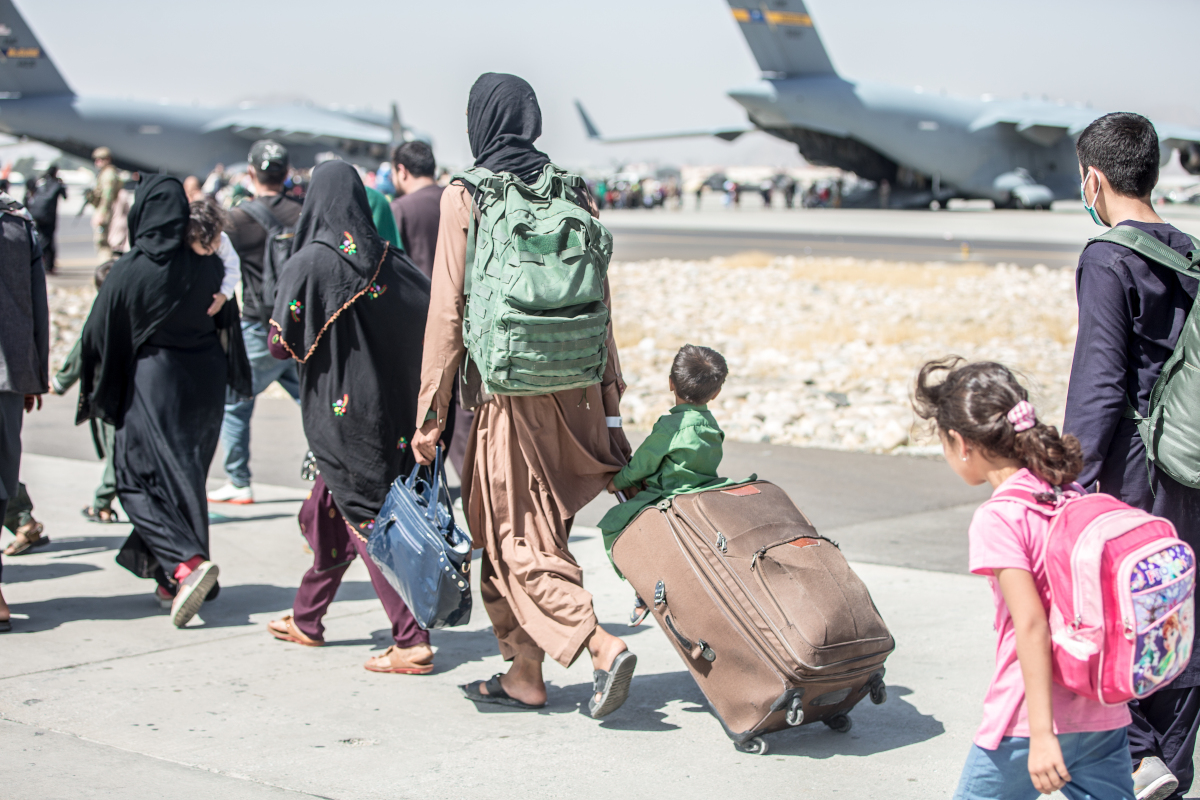
Despite reports of gates at the airport in Kabul being welded shut and people being turned away, Pentagon Press Secretary Kirby did insist at today’s press conference that evacuations of American nationals and others would continue right up until the very end. At the same time, American allies and partners who have been conducting their own evacuation operations out of Hamid Karzai International Airport in coordination with the United States over the past two weeks are already closing out those missions ahead of next week’s deadline. This will only further reduce the overall airlift capacity available going forward.
“Lives are going to be the priority,” Kirby said bluntly at today’s press conference. “Some stuff will obviously come back with us, but for the aircraft that are departing, as we get closer to the end of the month, we want to prioritize passenger seats as much as possible.”
Kirby also said that the amount of information the U.S. government gives out about how many troops it has in Kabul and other details about the American military presence there will slow in the coming days for operational security reasons. There are reports that other U.S. government agencies, such as the Central Intelligence Agency (CIA), are also stepping up their withdrawal processes. It seems likely that other privately-funded evacuation efforts will end in the coming days, as well, as the security situation at the airport in Kabul becomes even more fluid as American troops leave.
All told, the United States seems to be moving ever more inexorably toward ending its nearly two-decade-long presence in Afghanistan in the next few days. Destroying American or other military equipment in place at Hamid Karzai International Airport is clear evidence of the increasing finality of the mission.
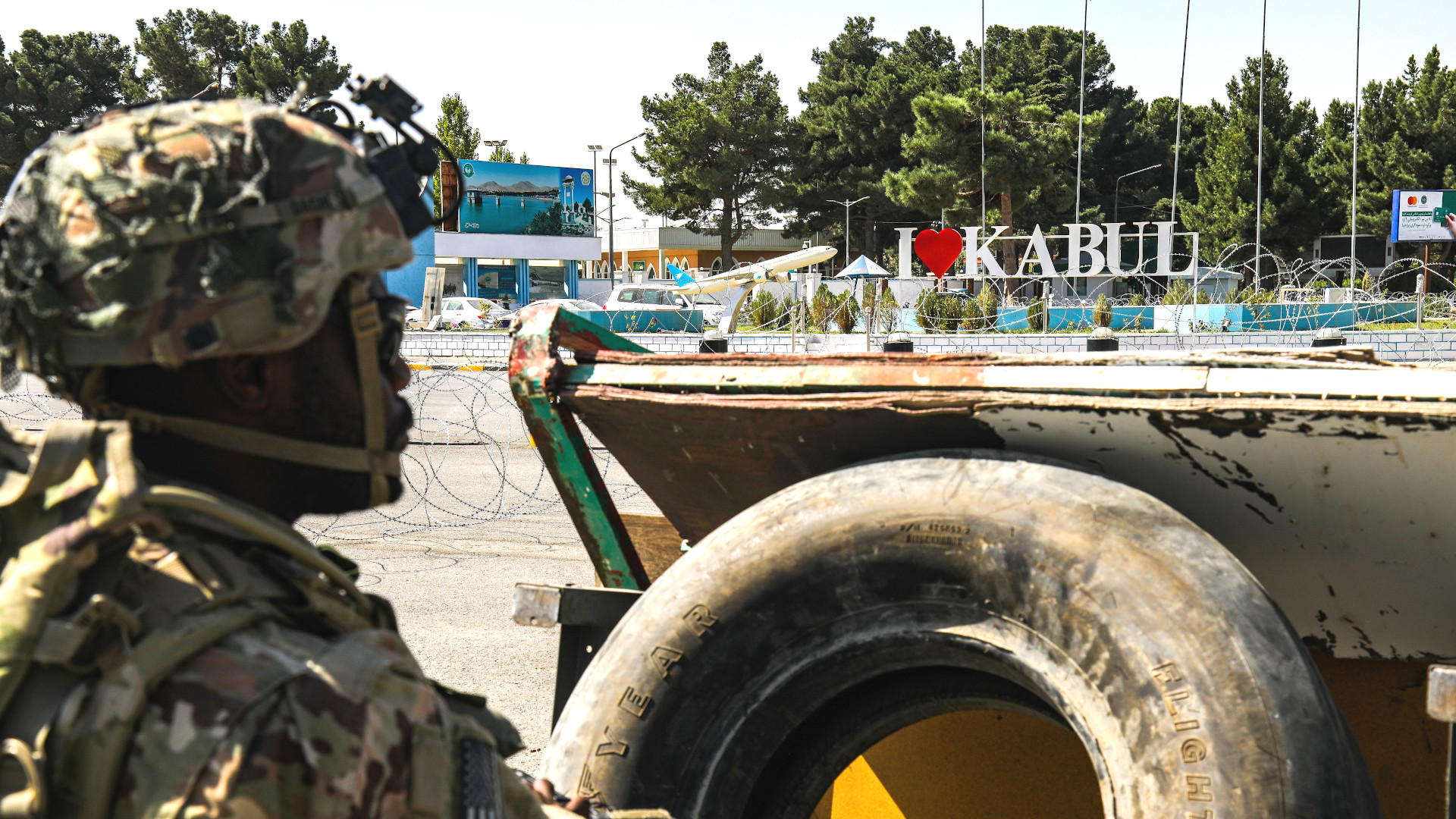
Contact the author: joe@thedrive.com
